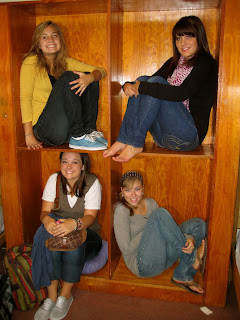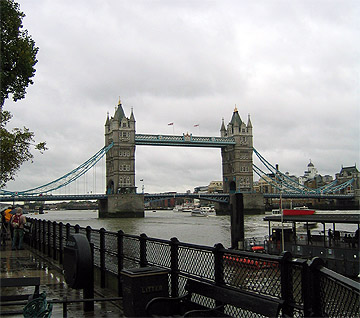For my Enlgish 300 class we have been studying the affect that nature has on literature. We have mostly been reading poetry. We recently wrote a paper on one of the poems we have been studying in class. In it we were supposed to discuss how the use of nature can relay the real message the aurthor was trying to make. Here is my paper. Hopefully it will impress you and my professor! Enjoy...
There are two definitions of nature. The first being the nature of a person, the nature of a community, or the nature of any object which refers more to characteristics such as innate personality traits or inherent behavioral patterns. The second being the nature that refers to the actual flora and fauna and landscape of a particular place. Often times the landscape definition of nature is used to characterize the nature of a person or a community. This is precisely what Thomas Gray accomplishes in his poem “Elegy Written in a Country Churchyard.” A simple reading of this work may convey a picture of a lonely church cemetery but underneath the rural scenes Gray is addressing the social problems of his time. Gray ultimately uses the nature present in a churchyard as an analogy to the social nature of the eighteenth century.
The first parallel the poem makes is the way the poor are defined by nature. The scene opens at the end of the day with a description of the landscape and the animals and trees that cover it, “The plowman homeward plods his weary way” (3) and darkness begins to set in. Through these simple descriptions the dominating force of nature is manifest in a peasants life. They live their life day to day as the sun comes and goes. The plowman’s day is determined by the sun; he returns home when darkness or the elements prevent his work. Their lives have a simple rhythm with the elements of nature. Their station in life is also defined in their working of the land. In farming the plowman uses a sickle to “furrow of the stubborn glebe” (25) which means he creates a small trench to plant seeds into a row. Everything grows in a straight line because it is planted there. This is paralleled to the way the poor live. They are planted into life with it already “furrowed” in a certain direction and the have no way to branch from it. Gray describes a poet who epitomizes this theory. The poet is seen by the “upland lawn” (100), under the “nodding beech” (101), or by the “brook that babbles” (104) just wandering and thinking. He is lead to the places that suit his life and work. His life is simple and lead by nature. The connection of the poet and the nature is sealed when at his death he is buried into the earth that had patterned his life.
Gray also uses nature, or rather the lack of nature, to view the life of the aristocrat. Instead of living in parallel with nature the wealthy go around with “the boast of heraldry, the pomp of power, /and all the beauty, all the wealth e’er gave” (37-38). They seem only to be concerned with one thing, themselves. Gray describes the life of these great men with all pomp and importance of ancestors, all beauty and accumulated wealth, no simpleness or rhythm. They live there lives shut up in their houses and churches and ignore the rhythms of nature. Gray projects that all the counterfeit pride will eventually come to an end because all “the paths of glory lead but to the grave” (36). He is stating that all the dominant acts and superfluity is useless because eventually everyone ends in the same place, the grave. Even in death the rich fight against nature. They chose to be enshrined in a church with “the long-drawn isle and fretted vault” (39) rather then in the earth. The wealthy are not defined by the nature within the churchyard but rather by the church itself. They want to be remembered for their greatness and wealth and not for their deeds. In all their snobbery and royalties, they erect “trophies” (38) and ring bells pleading with the world to never forget them.
Joining these theories about nature defining the rich and poor, two new views emerge: first, the way the aristocrats view the poor. At the start of the poem Gray describes several animals in the churchyard. He describes an owl sitting up in a “ivy-mantled tower” (9) complaining to the moon about things wandering over to “molest her ancient solitary reign” (12). The owl represent the these aristocrats and their idea that they can look down on the poor. They sit on their mantled thrones or in their decorated manors and tyrannize their servants and the commoners who work beneath them. They justify their actions with their power; they believe they have the right because of their ancient solitary endowment. They view the poor as a part of nature, the very nature to whom they are indifferent and ignore.
The second theory that emerges from the description of the rich and poor is the way society, and the poor themselves, should view the poor. Gray discourses on the lives these poverty stricken people could live if they are given the chance. He states “Full many a gem of purest ray serene,/The dark unfathomed caves of ocean bear:/Full many a flower is born to blush unseen,/And waste its sweetness on the desert air” (52-56). The first two lines of this stanza are referring to beautiful gems on the ocean floor that no one ever discovers. The second two lines are describing beautiful flowers out in the wilderness that bloom but no one is there to see them blush or to smell their sweet perfume. Both the gem and the flower are there and still magnificent but no one is there to recognize it or praise them; likewise, these peasant forced to live a certain life have this potential to become great yet no one is there to discover them or praise them. They could sway “the rod of empire” (47) and be great rulers or wake “the living lyre” (48) and become great musicians but “Chill penury repressed their noble rage,/And froze the genial current of soul” (51-52). Their poverty, which is the very station they are thrust in to, bars them from their potential and represses any high ambitions.
Nature is way of defining nature. In “Elegy Written in a Country Churchyard” written by Thomas Gray, the social nature of his time is questioned through the simple nature in a church cemetery. Nature, such as the owls of the night and sweet smelling desert flowers, parallel the wealthy and poor and show them as the elite who look down upon the poor and the poor who are channeled into a life there is no branching from. Gray is trying to say that social hierarchy is an ignorant cultural custom. In the end death unites everyone, life should unite as well; yet, as Gram has illuminated, social discrepancies will divide.












































